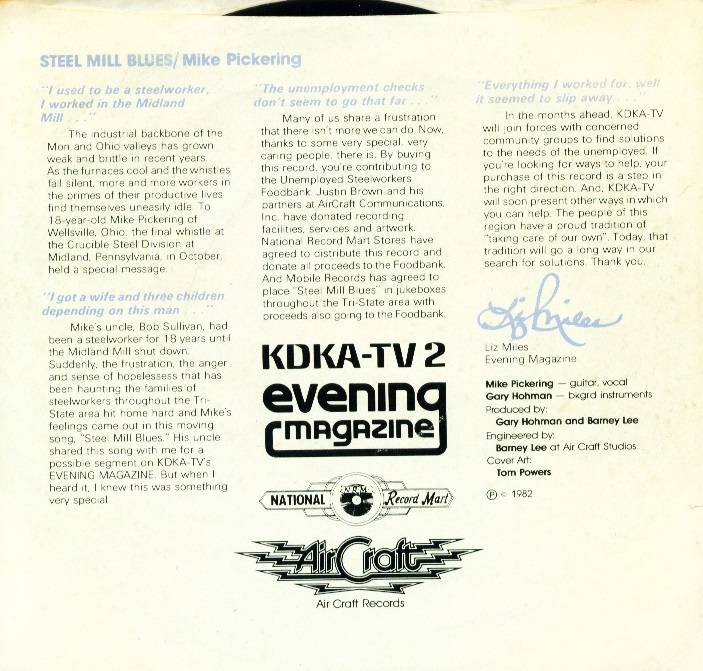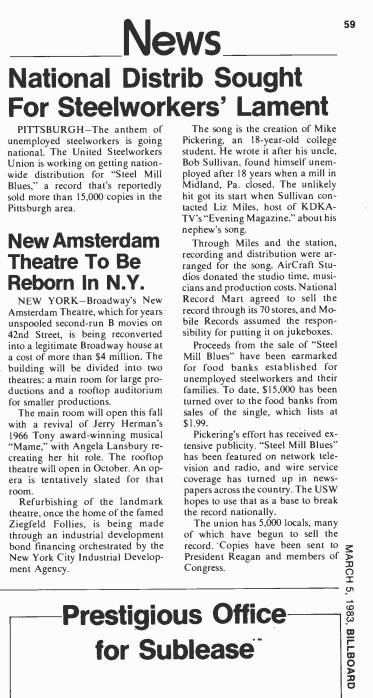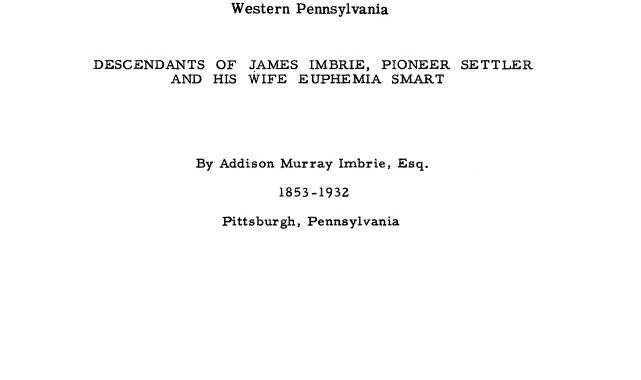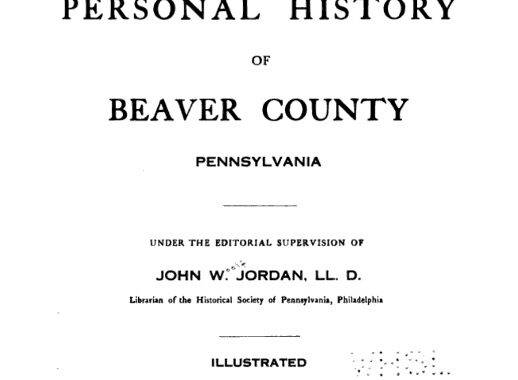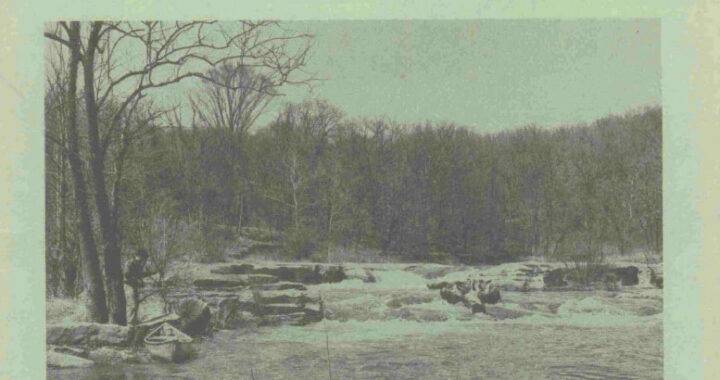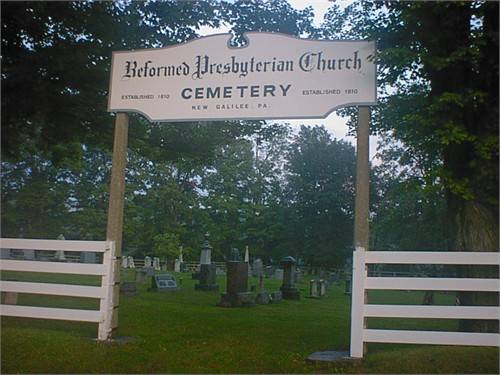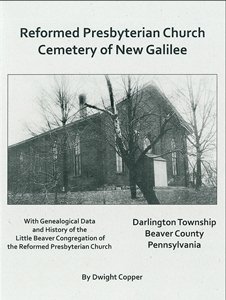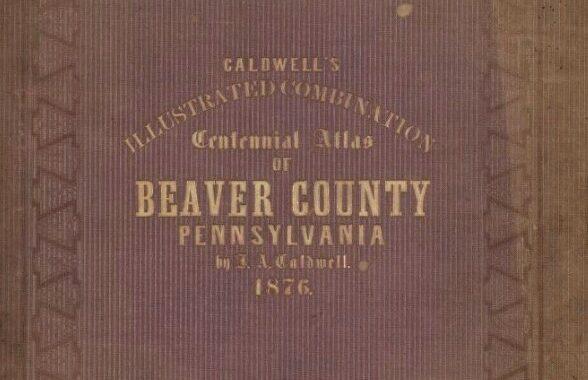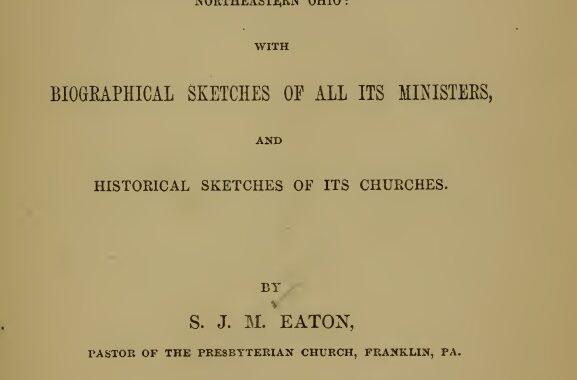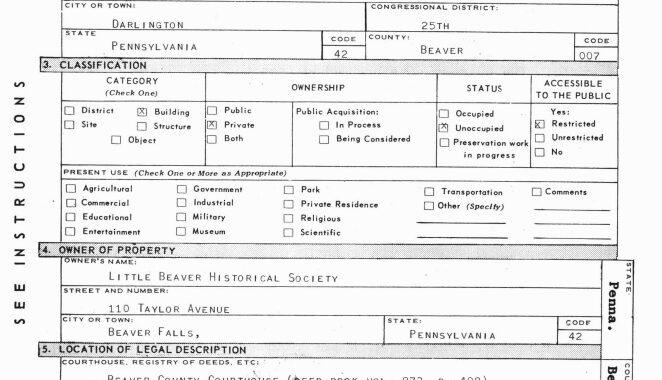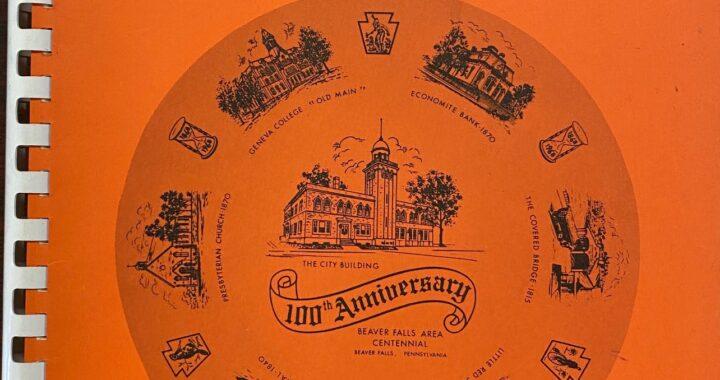The Covenanter or Reformed Presbyerian Church was established in 1807 under the leadership of Rev. Mathew Williams. The first church edifice was a plain brick structure, and was located about one mile from New Galilee. Among the original members were the Youngs, Cooks, McCanlises, and the McGeorries. In 1872 a brick church was built in New Galilee but is now disbanded. This once widely scattered congregation is now concentrated, and worships in a comfortable church building in the town of New Galilee. As early as 1804, a few families were residing within the limits of this County, and in 1805, they were joined by James Cook from Canonsburgh. The society continued to grow and was occasionally visited by Rev. John Black. It was organized into a regular congregation in 1814, and for five years enjoyed supplies. The first pastor was the eloquent Robert Gibson, installed in September, 1819, and for eleven years he continued to draw large audiences wherever he preached, and built up a flourishing congregation. He resigned the extensive field in October, 1830, on account of impaired health. The next pastor was the Rev. George Scott, installed in April, 1831. At the division of the Church in 1833, he, and many of the congregation, went into the New School body, but the remnant retained the church property. This, however, so reduced their members that they were attached to the Slippery Rock congregation. The elders who stood fast to the principles of the Church were James Cook, John and James Young, and James McAnlis. The Rev. James Blackwood was installed the pastor, with other branches, in May, 1834, and during his pastorate Robert Gray and Robert Gilmore were added to the session. In October, 1838, Little Beaver and the adjacent societies in Ohio were organized into a separate congregation. The Rev. Joseph W. Morton was installed the first pastor in November, 1845, and was released in June, 1847, when he was chosen as a missionary to Haiti. Rev. Samuel Sterrett was installed pastor in June, 1848, and remained in charge until May, 1860, when Little Beaver became a distinct congregation and he retained the branches in Ohio. For four years they received supplies. Rev. Nathan M. Johnston was installed in April, 1864. He remained in charge twenty-two years, during which time the congregation grew extensively and a new church building was erected in the town of New Galilee. Mr. Johnston resigned the charge in June, 1886, and Rev. James R. Wylie was installed pastor in May, 1888.
Among the families long connected with the Church in this vicinity are those of: Cook, McAnlis, Porter, Calderwood, Young, Gray, Gibson, Gilmore, Duff, Carson, Qua,Campbell, McGeorge, Dodds, Boggs, Patterson, Acheson and Sharp.”
This church cemetery is located on the west bank of the river, on Sylvania Drive (Township Highway 679) with the nearest cross street being Madden Run Road and County Line Road and is situated just north of New Galilee, PA 16141
SEE ALSO:
Reformed Presbyterian White Church Cemetery
New Galilee, Beaver County, Pennsylvania, USA
Mount Pleasant Cemetery
Big Beaver, Beaver County, Pennsylvania, USA
Rocky Spring Cemetery
New Galilee, Beaver County, Pennsylvania, USA
Old Free Presbyterian Church Cemetery
Darlington, Beaver County, Pennsylvania, USA
About Find a Grave
Find a Grave is the best place on the internet to look for burial and other final disposition information for your family, friends and famous people. The site provides tools that let people from all over the world work together, share information and build an online, virtual cemetery experience.
At Find a Grave you’ll find details about cemeteries and individual memorials for many people buried in those cemeteries. Memorials generally include birth, death and burial information and may include pictures, biographies, family information and more. Members can contribute what they know and can leave remembrances via ‘virtual flowers’ on the memorials they visit, completing the virtual cemetery experience.
Our goal – Find a Grave’s mission is to help people from all over the world work together to find, record and present final disposition information as a virtual cemetery experience.
History – Find a Grave got its start in 1995 when founder Jim Tipton built a website to share his hobby of visiting the graves of famous people. He found that many people shared his interest and quickly opened the site for all individuals (famous and non-famous) with a mission for finding, recording and presenting burial and final disposition information worldwide. Since then, millions of contributors have been entering memorials, photos, GPS locations, biographies and other rich content to the site. As the site grew, the community grew also. Find a Grave houses the largest international graving community in the world. In 2013, Find a Grave became a wholly owned subsidiary of Ancestry.®
Return to LBHS History Library Online
